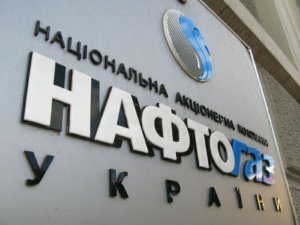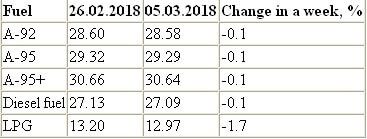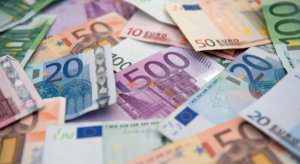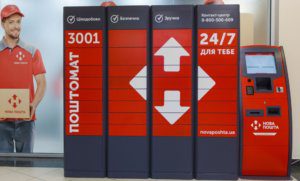
Naftogaz Ukrainy will open an office in Germany, which will also represent the interests of the company in Austria and Switzerland.
According to a company report in the information disclosure system of the National Securities and Stock Market Commission, the decision to open a representative office in Munich has been agreed by the company supervisory board.
Earlier, the supervisory board of Naftogaz instructed the board to take all necessary measures to liquidate the Russian office of the company in Moscow by March 12, 2018.
Naftogaz Ukrainy unites the largest oil and gas producing enterprises of the country. The holding is a monopolist in transit and storage of natural gas in underground storage facilities, as well as oil transportation via pipelines throughout the country.

A Japanese and Austrian company are interested in capital investment in Kryvy Rih oxidized ore mill, the Economic Development and Trade Ministry of Ukraine said on its Twitter page posting photos of a meeting of Ukraine’s First Deputy Prime Minister, Minister for Economic Development and Trade Stepan Kubiv with a delegation headed by Hiroshi Ishikawa responsible for the Iron Unit Division at Kobe Steel.
“The group of companies has designed a new technology for processing oxidized ores and it is interested in building a complex on the basis of Kryvy Rih oxidized ore mill,” the ministry said.
The press service of the ministry told Interfax-Ukraine that along with Kobe Steel, Austria’s Hares Engineering GmbH also showed its interest in the mill.
“These are Kobe Steel and Austria’s Hares Engineering GmbH. We have decided to shape an action plan. The ministry is interested in cooperation with them. The ministry is interested in leasing the property of Kryvy Rih oxidized ore mill. We will report later on concrete results of negotiations,” the press service of the ministry said.
According to a report of the ministry on Twitter, Kubiv pointed out the importance of attracting Ukrainian construction and engineering companies to construction of the complex on the basis of the Kryvy Rih mill.
Kobe Steel’s interest in the Kryvy Rih oxidized ore mill was reported back in the second half of last decade. In particular, in March 2009, during a visit of the then-Minister of Industrial Policy of Ukraine Volodymyr Novitsky to Japan, a memorandum of cooperation was signed between the Ministry of Industrial Policy, Kobe Steel and Hares Engineering to consider the introduction of ITMk3 technology (Ironmaking Technology Mark Three) at the mill. It was planned to create a working group to draft concrete proposals.
The construction of the mill started in 1985. The assessed total investment required to complete the construction and launch the Kryvy Rih oxidized ore mil, according to preliminary data, was about $800 million.

Average retail prices for petrol and diesel fuel in Ukraine in the period from February 26 to March 5, 2018 almost did not change, while the prices of liquefied petroleum gas (LPG) decreased by 1.7%, according to data from the A-95 Consulting Group (Kyiv).
As reported, average retail prices for petrol in Ukraine for 2017 increased by 19.2-20.1% (by UAH 4.61-4.76 per liter), for diesel fuel by 22.6% (by UAH 4.84 per liter). At the same time, average prices for liquefied petroleum gas (LPG), despite a sharp increase in August due to deficit, showed an increase of only 2.9% for the year (by UAH 0.36 per liter).
Changes in average retail fuel prices UAH per liter in Ukraine:

©Source: A-95 Consulting Company

The government of Norway and other Scandinavian countries will additionally issue almost EUR3.8 million in 2018 to finance new projects aimed at increasing the energy efficiency of social facilities located in the conflict-affected eastern regions of Ukraine.
“The project of the Nordic Energy Efficiency and Humanitarian Support Initiative for Ukraine (NIU) provides for the reconstruction of public buildings to reduce energy costs for their heating, lighting and hot water supply, as well as the introduction of LED street lighting,” the press service of the Ministry for Temporary Occupied Territories and Internally Displaced Persons said.
It is noted that the NIU fund, created in 2014, finances energy saving measures in schools, children’s and medical institutions, street lighting in the southeast of Ukraine in the cities affected by the military conflict. Since the start of its activities, the fund has financed 25 projects in 21 cities in Donetsk and Luhansk regions, as well as in the neighboring regions for EUR12 million.

Nova Poshta, a leader in express delivery in Ukraine, has opened a first phase of the new parcel sorting center – Kyiv Innovative Terminal (KIT) in Zhuliany district of Kyiv City.
Co-founder of Nova Poshta Volodymyr Popereshniuk said on Friday, March 2, that the terminal can service over 350,000 parcels a day.
The first phase of the center can process only parcels and small parcels (envelops).
The center services the right bank area of Kyiv City and Kyiv region.
Vanderlande supplied sorting equipment. The capacity of the equipment is 8,500 bar-codes per hour (over 200,000 bar-codes a day).
Five faces of parcels are scanned with the speed of 2.3 parcels per second.
Popereshniuk said that in the future it is required to scan all six faces of the parcels for cutting the scanning time.
Another co-founder of Nova Poshta Viacheslav Klymov said that investment in construction of the first phase of the KIT terminal amounted to EUR 15 million. The half of the money is own funds from reinvested profit and the rest are borrowed funds.
“Ukrainian banks helped us a lot. This is a first large loan, as we have been developing for 17 years using own funds,” he said.
Popereshniuk said that the first phase is 80% of the readiness of the entire center, and it is likely that $5-10 million will be required to finish the project.
The KIT terminal was built in 2015-2017. Art Bud Service LLC acted as general contractor. The total area for construction is 23,900 square meters. The area of the first phase is 14,800 square meters.
The center processes over 400 trucks a day. A total of 750 employees will work there in four shifts.